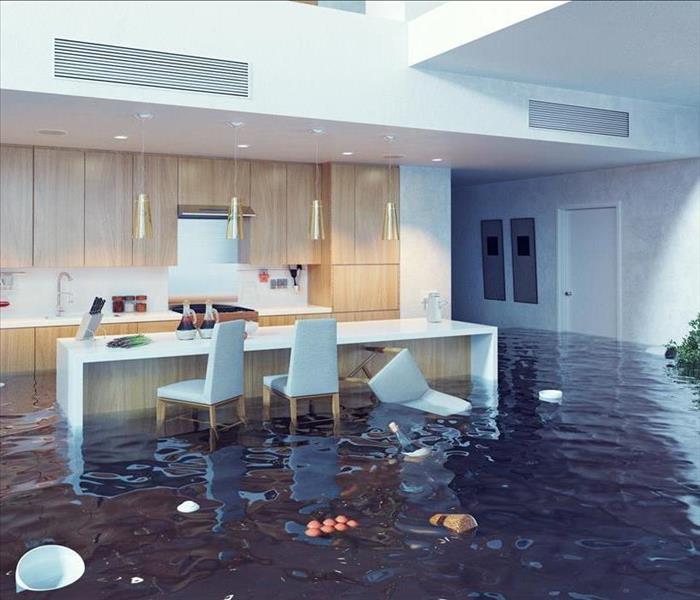What to do After a Supply Line Break
2/26/2019 (Permalink)
Though your home features a number of different pipes and plumbing components, one of the most important of those lines is the supply line. You might see one of these on your dishwasher, washing machine or any other appliance or object that needs access to the water line. After a supply line break, water in a home will build up. Instead of trying to fix the problem yourself, there are several key reasons to call a water cleanup or restoration company to do that work.
What to do After a Supply Line Break
Shut Off the Water
Very few people know how to turn off the water to their homes. Most supply lines have some type of valve or handle that allows an individual to shut off the water just to that item and not the whole home. With a pipe break problem though, you may not remember which way to turn the valve. The water that keeps coming out can eventually lead to you dealing with a flooded home or with water in a business. The main reason to call a water damage company is because that company can turn off water to that line as well as shut off the water to your home.
Dry the Floor
The next reason to choose professional restoration help is because those professionals can dry the floors and any other surfaces impacted by the flood damage. Using the wrong drying methods is potentially dangerous because those methods can dry the home too quickly or too slowly. When you use a drying method that works too slowly, you leave your home susceptible to both mold and mildew. Mold and mildew can thrive whenever there is water in a home or water in a business. Drying things too quickly can warp your floorboards and cause other problems too, but mitigation companies know exactly which drying methods to use on every type of surface and material.
Pumping Out a Flooded Home or Business
When flood damage causes water in a business or water in a home, you need to use a pump as part of the flood damage restoration process. The pump sits on a lower level of the home or business and uses hoses and tubes to slowly suck up any water in the area. This is a little similar to how a vacuum cleaner works. Removing water in a home or water in a business is important because it allows the building to dry faster.
Checking for Water Damage
Water restoration and mitigation professionals working for a restoration company will also look for water damage after a supply line break to ensure that the flooded home does not suffer any additional damage. Depending on how long the pipe break ran before you sought help, you may find yourself dealing with rotten floorboards or rotten joists that support the flood. Water cleanup professionals can get in between the walls and floors of the home to see how deep the flood damage went.
Paying for water damage restoration and mitigation after a supply line break is important because the restoration company you hire can reduce the flood damage that occurs. Not only can they turn off the flow of water to the pipe break, but they can replace the broken supply line. They also take other steps to ensure that the water damage you see doesn't go too deep inside your home and that you can use your bathroom, kitchen or utility room again.
Some of the water cleanup restoration and mitigation procedures that these workers use include thorough drying of surfaces, removal of standing water and mold inspections. If you have a supply line break on an appliance or a pipe break inside the wall, don't hesitate to call. Get professional help from a restoration company with experience dealing with a flooded home just like yours at any time of the day or night.






 24/7 Emergency Service
24/7 Emergency Service
